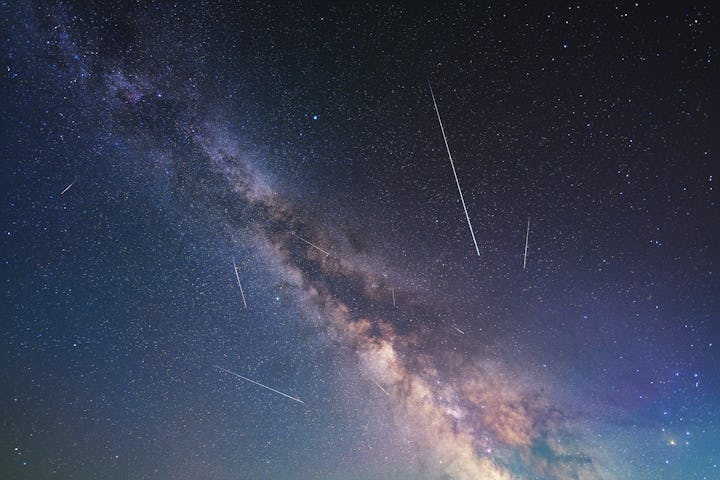Autumn's First Meteor Shower Is The Kid-Friendliest Of Them All
The Draconids can be full of surprises.

The sun-filled days of summer are almost over, and right behind them are the cool, crisp days of fall — and some spectacular Autumn sky shows. The first of which — the Draconids — is set to dazzle, and it’s a weird one you don’t want to miss. The Draconids also kick off the meteor shower season, meaning that if you miss these Draconids, many more meteor showers are on the way.
What are the Draconids?
The Draconids meteor shower stems from the periodic comet 21P/21P/Giacobini-Zinner, which zips past the Earth before looping around Jupiter’s orbit only to return in 6.6 years.
When the comet returns to the inner solar system — Mercury, Venus, Earth, and Mars — the nucleus of the comet sheds rock and ice debris into space. As Earth passes through that debris during rotation, that debris, sometimes called “comet crumbs,” heats up when it enters the atmosphere of Earth, where it burns up.
The debris burning in our atmosphere creates the meteor shower as we see it — streaks of light zipping across the sky.
What makes the Draconids weird?
When it comes to meteor showers, there is something unique about the Draconids that makes it stand out from the others throughout the year — the time of day when the meteors fly through the sky.
“Unlike many meteor showers, more Draconids are likely to fly in the evening hours than in the morning hours after midnight,” EarthSky.org notes.
The meteor shower is also unique in that it can either be a sleeper — with only a few meteors visible per hour — or it can be a perihelion, the point at which the comet is the closest to the sun. During a year when the comet is in perihelion, it can cause a meteor storm resulting in hundreds or thousands of meteors per hour.
“The last perihelion of the comet was September 10, 2018,” EarthSky.org notes. “On that same night, Comet 21P/Giacobini-Zinner came closer to Earth than it had in 72 years.” The next perihelion is expected in 2025 — but that’s just an educated estimate.
When are the Draconids active this year?
This year, the Draconids will happen on the night between Oct. 8 and Oct. 9, near the New Moon — meaning viewing conditions will be ultra-ideal. The best time for Draconids viewing will be in the early evening hours of October 8, per the Farmer’s Almanac, but if you want to find the exact time the Draconids are expected to peak based on where you live, TimeandTable has a really handy chart to ensure you have the most up-to-date time estimates.
How to watch the Draconids meteor shower with the kids.
To watch the meteor shower with the kids, you won't need any special equipment to see the lights zip through the sky. As with most showers, your best viewing will happen on a night when the sky is clear, and you’re away from as much light pollution as possible — the darker, the better.
From there, all you need is a comfortable chair or blanket, a warm sweater, patience, and maybe a cup of hot chocolate, weather permitting.
Up next for meteor shower shows will be the Orionids, which will peak at the end of October.